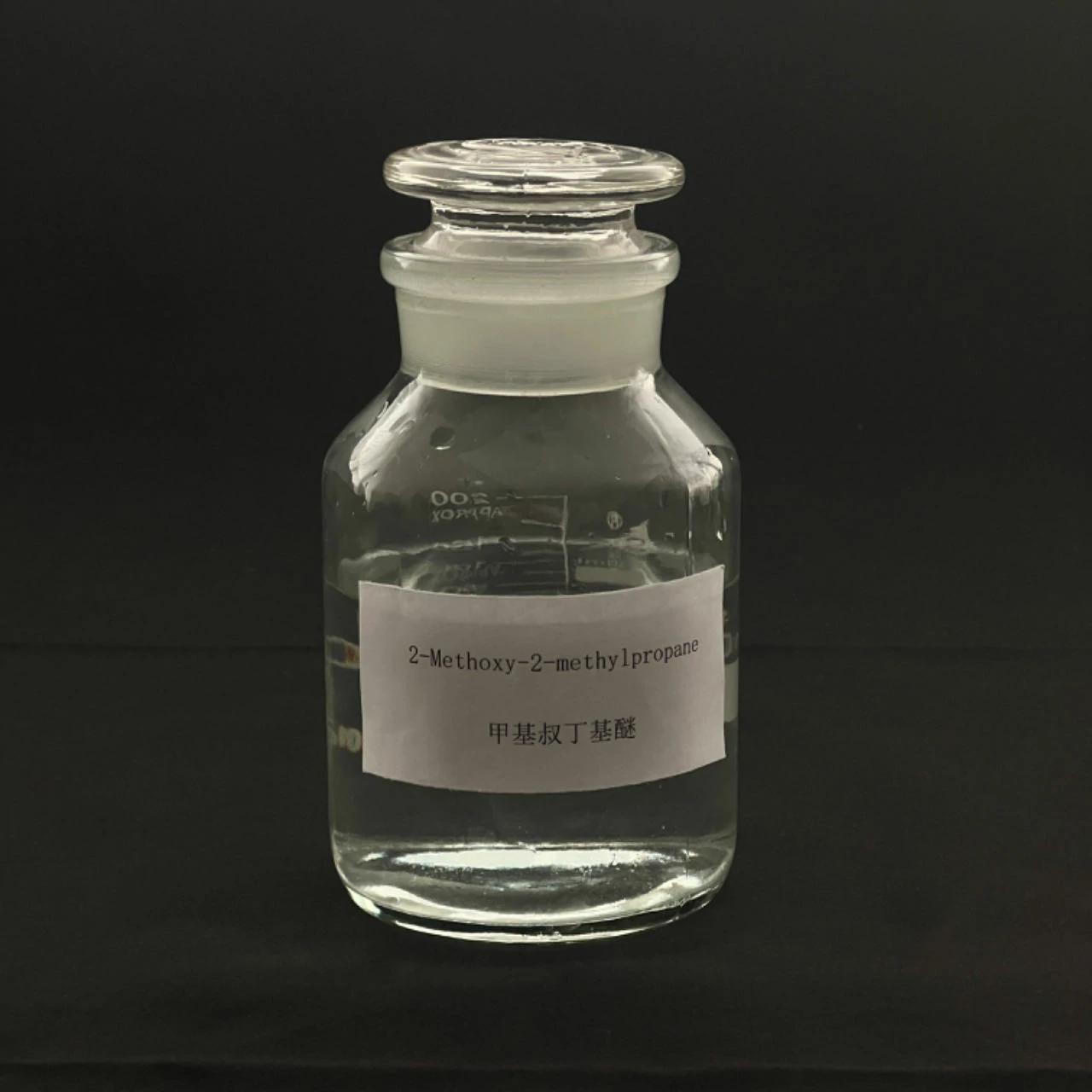2-Methoxy-2-methylpropane (also known as tert-butyl methyl ether or MTBE) has certain hazards and safety considerations associated with its use. Here are some of them:
- Flammability: MTBE is highly flammable and can form explosive vapor-air mixtures. It has a flash point of around -10°C (14°F) and can ignite easily when exposed to an ignition source.
- Health Hazards: MTBE can cause health effects upon inhalation, ingestion, or skin contact. Inhalation of high concentrations of MTBE vapor may lead to irritation of the respiratory system, dizziness, headache, and nausea. Prolonged or repeated exposure may also cause damage to the liver and kidneys.
- Environmental Concerns: MTBE is known to be a potential groundwater contaminant. It has been used as an additive in gasoline to enhance its octane rating, but its water solubility and resistance to biodegradation have raised concerns about its presence in drinking water sources.
- Chemical Incompatibility: MTBE may react with strong oxidizing agents, such as chlorine bleach, resulting in the release of hazardous gases or even explosions. It is important to avoid contact with incompatible substances and ensure proper storage and handling.
- Safety Precautions: When working with MTBE, it is essential to follow proper safety precautions. This includes using adequate ventilation to minimize inhalation exposure, wearing appropriate personal protective equipment (such as gloves, goggles, and a respirator), and taking precautions to prevent fire hazards.
- Storage and Disposal: MTBE should be stored in a cool, well-ventilated area away from heat sources, open flames, and oxidizing agents. It should be kept in tightly sealed containers and handled in accordance with local regulations for flammable liquids. chemical 2-Methoxy-2-methylpropane Proper disposal methods should be followed to prevent environmental contamination.
It’s important to consult the specific safety data sheet (SDS) or seek expert advice for detailed safety information and guidelines when handling, using, or storing 2-Methoxy-2-methylpropane (MTBE) to ensure safe practices and minimize risks.
Can 2-Methoxy-2-methylpropane undergo chemical reactions or be used as a reagent in organic synthesis?
2-Methoxy-2-methylpropane (MTBE) can undergo certain chemical reactions and be used as a reagent in organic synthesis.
Here are a few examples of its reactions and applications:
- Ether Cleavage: MTBE can be cleaved using strong acids, such as sulfuric acid or hydrochloric acid, to produce tert-butanol and methanol. This reaction is often employed for the synthesis of tert-butyl alcohol.
- Alcohol Protection: MTBE can act as a protecting group for alcohols. By treating an alcohol with MTBE and an acid catalyst, the alcohol can be converted into its corresponding MTBE ether to protect the hydroxyl group. The MTBE group can then be removed later to regenerate the alcohol.
- Phase Transfer Catalyst: MTBE can serve as a phase transfer catalyst (PTC) in organic synthesis. It facilitates the transfer of ions or reactants between immiscible phases, such as an aqueous phase and an organic phase. MTBE can enhance reaction rates and improve yields in certain reactions, such as nucleophilic substitutions or ion-exchange reactions.
- Solvent and Extraction Agent: MTBE is commonly used as a solvent or extraction agent in various organic reactions and processes. It has good solubility for a wide range of organic compounds and can be employed to dissolve and extract specific substances from mixtures.
- Fuel Additive: While not directly related to organic synthesis, MTBE has been used as a fuel additive in gasoline to improve octane rating and reduce engine knocking. However, its use as a fuel additive has declined in some regions due to environmental concerns.
It’s important to note that the specific reactions and applications of MTBE in organic synthesis may depend on the specific reaction conditions, substrates, and desired products. The suitability of MTBE as a reagent or solvent should be evaluated based on the specific requirements of the synthesis.
